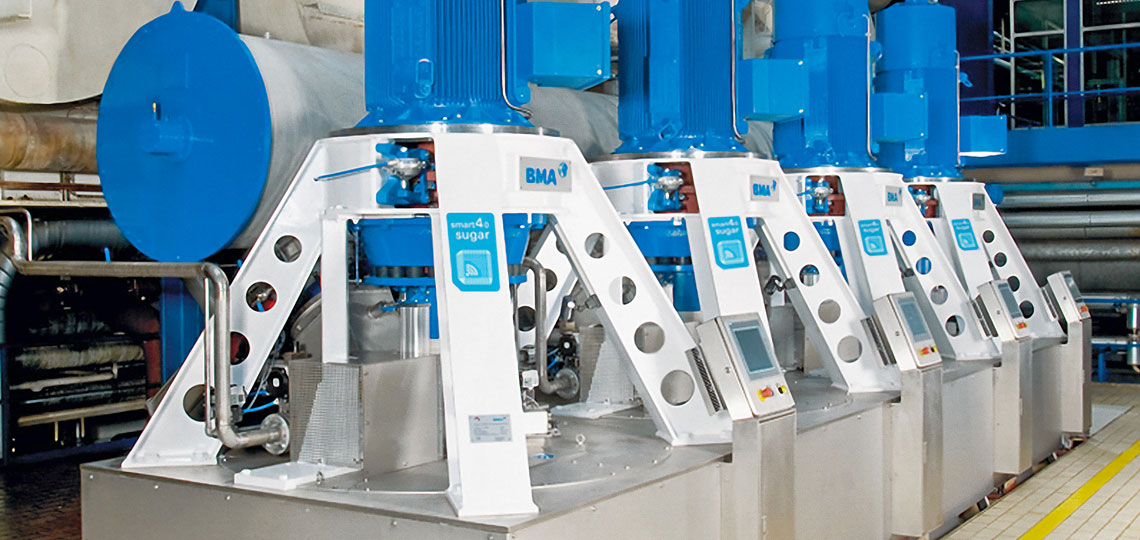Traditionally, the centrifugal station in a sugar factory comprises several centrifugals for the solid / liquid separation of massecuite into syrup and crystals. Because separation is a cyclical process, the energy demand varies considerably between acceleration and deceleration. Which is why a higher-level sequential control system can ensure that only a defined number of centrifugals accelerate or decelerate at the same time.
Today, optimising the operation of batch vacuum pans and centrifugals in the sugar house through use of a control system in such a way that batch-type operation is transformed into an almost continuous process with minimal variation and avoiding load peaks is therefore a major customer requirement.
BMA Automation has developed smart.sequencing for complete centrifugal stations, a smart operation control system for sequenced batch centrifugals. This highly innovative product has been successfully tested and is now established on the market.
Taking into account all customer requirements, smart.sequencing offers two modes for process optimisation:
- batch efficiency mode, where operation is aimed at achieving maximum output, and
- energy efficiency mode, where operation aims to reduce load peaks.
In both modes of operation, smart.sequencing considerably reduces the operator’s workload.

